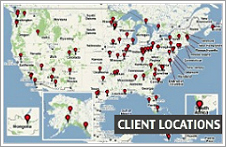Here’s your secret to more success at work
If you’ve achieved any kind of success at work — and we know you have! — you can easily achieve more. All it takes is a thoughtful look back and an action-oriented look forward. First, pick out one of your bigger successes from the work you’ve done in your current workplace. It doesn’t have to be some Nobel Prize equivalent — just an accomplishment that rises high on your list of “very well done.” Here are some wide-ranging examples to get you thinking: You had a breakthrough conversation with your manager. You assembled the perfect group for a given assignment. You came up with an idea and carried it through to fruition. You gave colleagues a new way to understand an old situation. You made connections with people in other work units. You helped a customer in a major way. You took it upon yourself to attend training and use new skills. Once you have a specific success in mind, think it through with these three prompts: What was the very first thing you did to set in motion the chain of events that led to your accomplishment? Even though other people might have been involved, focus on yourself and what you did. Fill in the blank: I set things in motion by _____. That first step is crucial. But what is one other thing you did that seemed essential to your success? Fill in the blank: Another key action on my part is that I _____. What are you glad that you didn’t do in this situation? Fill in the blank: If I had _____, I never would have achieved this success. Now step back and realize this: You played the key role in making this success happen. Other people might have helped, and the planets might have lined up in helpful ways, but your actions made the difference. As for the specifics of what you did, think about your fill-in-the-blank responses. You had a past-tense mindset for this exercise, but turn forward now and look ahead. What do your answers tell you about how you should go about your work in the future? Fill in the blank: I will achieve more success in the future as long as I _____. Your answer is some of the best advice you’ll ever get. Put it to work starting now. By Tom Terez •...
Read MoreYou can multi-do, but can you multi-think?
For the next 10 seconds, picture a pine tree swaying side to side in a gentle breeze. See it in your mind. Now picture a junk yard full of wrecked vehicles. They’re smashed into towers of rusted metal. You can see that too, right? Now try to see both images at the same time. Keep trying. Not so easy, eh? For those of us who have one brain, it’s impossible. At best, we can switch our thoughts from one image to another. But that’s not the same as having two trains of thought running on the same track at the same time. The fact is, whether we’re talking about pine trees or junk yards or work-related data or a customer issue or that latest team project, we can consciously apply our ample brainpower to only one thing at a time. So when it comes to multi-tasking, we can multi-do but we can’t multi-think. We can stay in motion, but it won’t be informed motion. This isn’t a problem when you multi-task on easy activities that call for little if any thinking. Go ahead and juggle to your heart’s content. But when your work calls for creativity or analysis or logic or evaluation or empathy or awareness or pretty much anything else where brainpower matters, opt for single-tasking. Your mind will serve you better, your results will be greater, and you will ultimately get more done more quickly. By Tom Terez •...
Read MoreSo simple: Turning noise into music
My penchant for playing a vintage Hohner accordion has not endeared me to my neighbors, but it has taught me an unexpected lesson about learning that relates to all of us. My father used to play the accordion. He played it well, brightening birthdays and livening up more than a few long-ago family gatherings. When he died in 2004, my sadness somehow steered me to eBay, where I bought an accordion of my own. It was the same model as his, but in mint condition. The day it arrived, I slipped on the shoulder strap and began to play — if you could call it that. I learned that nothing clears a room more quickly than an accordion in untutored hands. As the months unfolded, I practiced whenever I had the house to myself. Several times I played outside, on the back porch, but that ended when a backdoor neighbor sent a plaintive wail over the fence: “Shut up!” My playing improved, but something didn’t seem right. The accordion felt out of position despite the shoulder strap. A separate thumb strap helped stabilize the instrument, but that wasn’t right either, because the constant pull of thumb against strap was beginning to tear the leather. I kept practicing, but my playing hit a plateau. I tried harder, but got no better. That tear in the thumb strap got worse. Then something steered me to the Internet. YouTube beckoned, showing me the right way to handle an accordion. It took just five minutes to see the root cause of my problem: I was wearing the strap on my left shoulder when it should have been on the right. The moment I switched shoulders, my playing began to improve. The thumb strap stopped tearing, and my thumb felt relief too. Best of all, my family began to like me again because I was no longer tormenting them with my noisy determination. Was it a remedial correction? Absolutely. Should I have figured out the left-to-right switch instead of needing the YouTube assist? Probably. Do I care? Not in the least. I’m just glad to have made the discovery. The fact is, we all get stuck on plateaus at times. We all face situations where doing things the same way over and over might make things worse. We’d all benefit from an occasional pause in which we look around, learn from others, pinpoint better...
Read MoreA Walmart reminder: Use your strengths
The moment I heard that rich baritone, I had to know: Who is this guy? His was a voice like no other: rich, resonant, confident, congenial. The words sounded like warm syrup as they rolled from the store entrance to the checkout area where I was waiting in line. He poured forth every time a shopper arrived or departed: “Welcome to Walmart. So glad you’re here.” “Thank you for shopping at Walmart. Hope you have a fantastic day. Please come back, we’d love to see you again.” When I reached the checkout clerk, I asked about the vocally gifted greeter. The woman chuckled. “Oh, he’s my husband,” she said. “He does have a nice voice, and let me tell you, I hear it all the time.” She knew him well so I had to ask: “Has he thought about doing voice-over work for radio or TV? What about being a DJ or a sports announcer or something like that? He could record audiobooks. He could do commercials. He could do all sorts of things. The man has a gift!” She gave me the smile of someone who had heard it a hundred times. “When you leave,” she said, “tell him what you just told me.” I did, and he responded with a gracious thank-you. “I hear that all the time,” he said. “Well, what about it?” I asked. “Have you contacted any radio or TV stations or whoever needs great voices? Do you have a demo tape?” He looked surprised. “Who, me?” “Absolutely,” I said. “You have a real gift.” As we shook hands and said goodbye, he softened his voice to say one last thing: “You really think so?” Who knows what it was: excessive humility, skepticism, self-doubt, a lack of self-awareness. Something was keeping him from fully appreciating and exercising his extraordinary strength. He’s using it well at Walmart, of course, but could he use it there and beyond? The truth is, each of us has a great strength that remains largely untapped. It might not announce itself so frequently or publicly, but it’s there. You know it is. What’s yours? By Tom Terez •...
Read MoreLook in the mirror and meet your boss
Your boss is not your primary boss. You are — and the sooner you become your own best leader and manager, the sooner you’ll achieve big success.
Read MoreWhat snow shoveling teaches us about job satisfaction
It’ll whack out your back and wrench your rotator cuff, but snow-shoveling will also teach you everything you need to know about job satisfaction.
Read More



